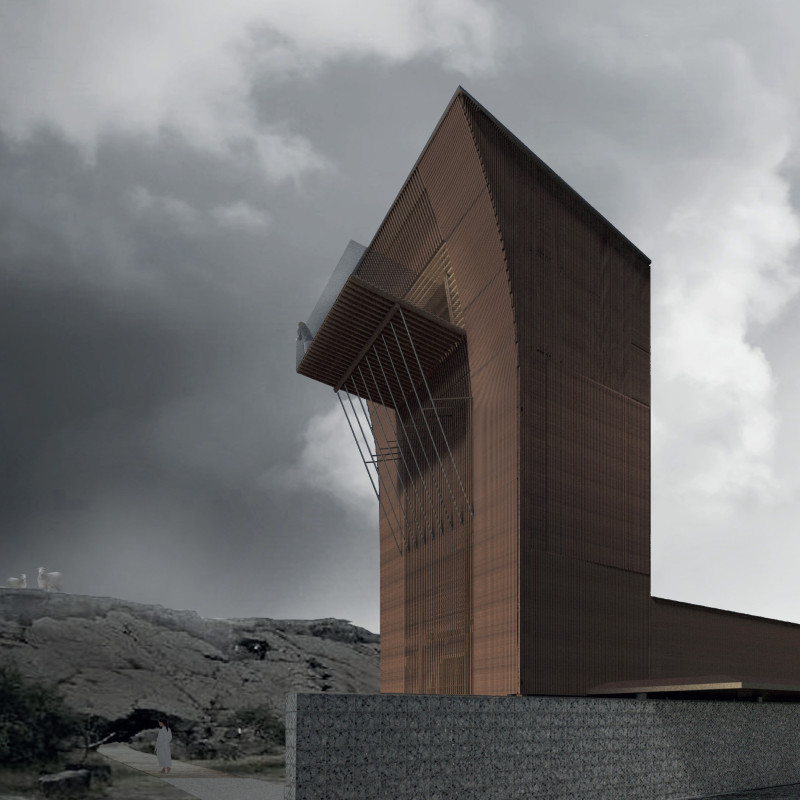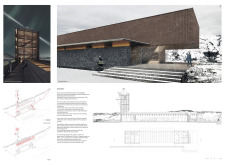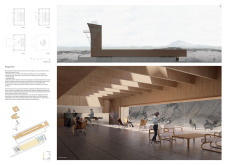5 key facts about this project
The design near the Grjótagjá cave in Iceland takes a close look at how buildings can coexist with the natural features of the landscape. Set among tectonic plates and volcanic structures, the place provides a setting for visitors to discover and appreciate the unique geography. The design aims to create a series of experiences that draw people into the surrounding environment, enhancing their connection to the land.
Spatial Sequences
The architecture is organized into four main experiences, each highlighting different views and elevation changes. The first experience begins inside, focusing on the height differences between the American and European tectonic plates. This invites visitors to feel the presence of the geological formations that shape the area.
The second experience reveals a terrace that allows views of the Grjótagjá fissure and the Krafla volcano. This open space encourages contemplation and interaction with both the architecture and the natural landscape, offering a moment of reflection.
The third experience leads visitors up to the tower. This ascent provides a chance to look southwest towards Hverfjall. Each elevation brings visitors closer to the landscape, deepening their understanding of the surroundings.
Panoramic Views
The last experience takes place at the top of the observation tower, where visitors can take in expansive views of the Vindbelgjarfjall volcano and Lake Mývatn. This high point acts as a connection between the building and the wider landscape, reinforcing the relationship between nature and human-made forms.
The tower, being tall and prominent, acts as the central feature of the project. It serves as both a lookout point and a source of light during long winter nights, marking the structure as a key element in the environment.
The use of stone and wood in the construction reflects a connection to the local landscape. The stone forms the gabion walls, blending with the natural setting. Wood is used throughout the building, allowing it to harmonize with its context.
Visitor experience is enhanced by clearly defined pathways, leading to different entry points and facilities, such as spaces for exhibits, receptions, and bathing areas. This arrangement prioritizes ease of access while allowing people to enjoy the nearby hot springs and geological features.
A notable detail of the design is the observation tower, which does more than provide a view. It stands as a point of orientation in the landscape, and its materials echo the textures and colors of the surrounding land. This thoughtful integration reinforces the connection between the building and its environment, offering a welcoming space for all who visit.






















































